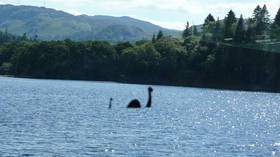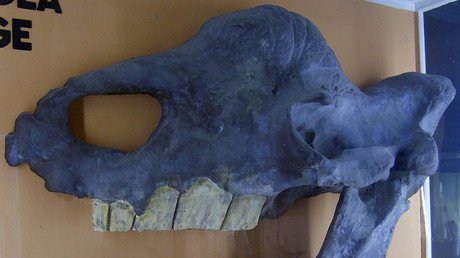Big Rev-eel: Scientists un-loch mystery of Scotland’s mythical creature Nessie

Scotland’s Loch Ness Monster has captured the public imagination for centuries, spawning wild conspiracy theories and wilder hoaxes, but now a team of researchers claim to have cracked the case.
The team, led by geneticist Professor Neil Gemmell of the University of Otago in New Zealand, sifted through 500 million DNA sequences obtained from 250 water samples taken from the murky depths of the world-famous lake in the Scottish highlands, which happens to be the UK’s largest body of freshwater.
Also on rt.com Loch Ness researcher says one theory about monster ‘remains plausible’After an exhaustive search through the results, the team wasted no time in knocking down some of the most popular theories posited to explain the mythical creature rumored to inhabit the lake.
Gemmell and his fellow researchers ruled out the existence of Jurassic-age reptiles, such as plesiosaurs, and found no catfish or shark DNA either. When all was said and done, only one “plausible” explanation remained.
“There is a very significant amount of eel DNA. Eels are very plentiful in Loch Ness. Our data doesn’t reveal their size, but the sheer quantity of the material says that we can’t discount the possibility that there may be giant eels in Loch Ness,” Gemmell said while making the announcement on Thursday, adding that he was surprised by the “sheer volume” of eel DNA found.
Hope you grabbed a water sample. On my way back to Ness to announce our findings. 10am GMT 5/9 at @LochNessCentre#lochnesshuntershttps://t.co/eJjR5d2f9R
— Neil Gemmell (@ProfGemmell) 2 сентября 2019 г.
It’s not all doom and gloom for Nessie devotees, however, as Gemmell posited that one or two of the many eel inhabitants of the loch may have grown to an “extreme size,” citing divers’ reports of “eels that are as thick as their legs.”
Given his expertise studying genetic mutation and variation, Gemmell said that a four-meter-long creature, as some sightings have suggested, was “not impossible.”
“For the people who still want to believe in monsters, there is still a lot of uncertainty in our work,” he said, adding rather cryptically that “the absence of evidence isn’t necessarily evidence of absence.”
VisitScotland claims the worldwide fascination with the creature (whether it’s real or imaginary) is still worth millions to the Scottish economy each year.
Also on rt.com ‘Nessie can’t hide from us all!’ Cryptid-hunters plan to storm Loch Ness, inspired by ‘Area 51 raid’Think your friends would be interested? Share this story!













